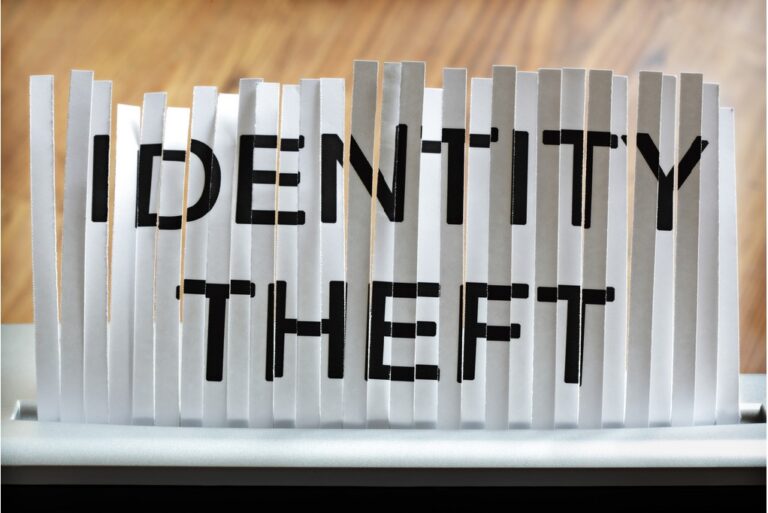Ponzi Schemes: Types, Prevention, and Reporting
Unmasking the Illusion: A Deep Dive into Ponzi Schemes – How They Work, How to Spot Them, and How to Protect Yourself in 2025
Introduction: The Enduring Lure of the Ponzi Scheme
Despite decades of warnings, high-profile collapses, and billions of dollars lost annually , the Ponzi scheme remains a persistent and devastating form of investment fraud. Its enduring appeal speaks volumes about the powerful psychological triggers it exploits – greed, trust, and the pervasive fear of missing out on easy wealth. Even with historical examples dating back over a century, from Charles Ponzi himself to the colossal fraud orchestrated by Bernard Madoff, these schemes continue to resurface with “monotonous regularity” , adapting their disguises to fit the modern landscape. The Federal Trade Commission (FTC) reported staggering losses due to fraud in recent years, with investment scams being a major contributor, costing victims billions.
At its heart, a Ponzi scheme is an investment fraud that promises high financial returns with little or no risk to investors. However, these returns are not generated through legitimate business activity or investment profit. Instead, the scheme operator pays purported returns to earlier investors using the capital collected from newer investors. It is a house of cards built on illusion, designed to look like a successful enterprise while enriching the operators and paying off just enough early participants to maintain the facade.
The fundamental structure of a Ponzi scheme makes its collapse not just likely, but mathematically inevitable. They require a constant, ever-increasing flow of new money to survive. Once this inflow slows – either because recruitment becomes difficult or because too many investors try to withdraw their funds simultaneously – the scheme unravels, leaving the vast majority of participants with significant, often life-altering, losses. The persistence of these schemes, despite numerous cautionary tales, suggests that understanding the mechanics is not enough; potential investors must also recognize the psychological vulnerabilities that make these pitches so tempting. The promise of quick, substantial, and seemingly risk-free gains taps into deep-seated desires, often overriding rational judgment.
This article aims to provide a comprehensive guide to understanding Ponzi schemes in the current environment. We will delve into the mechanics of how they operate, trace their history from the original namesake to modern digital variations, differentiate them from similar pyramid schemes, and explore the latest tactics employed by fraudsters, including those leveraging cryptocurrency and online relationships. Crucially, we will identify the critical red flags that can signal danger, outline actionable prevention strategies and due diligence steps, and detail the proper channels for reporting suspected fraud. This report seeks to be an accessible (“reachable”) and up-to-date resource , equipping readers with the knowledge needed to protect themselves and their finances. A Frequently Asked Questions (FAQ) section is also included to address common concerns.
Unmasking the Mechanics: How Ponzi Schemes Really Work
The core mechanism of a Ponzi scheme is deceptively simple, often described as “robbing Peter to pay Paul”. An operator, or a group of operators, solicits funds from investors, promising exceptionally high returns that are supposedly generated through a unique business venture or investment strategy. In reality, little or no legitimate investment activity occurs. Instead of generating profits, the operator uses the money collected from new investors (Investor B, C, and D) to make “return” payments to earlier investors (Investor A). This creates a convincing illusion of a highly profitable enterprise, encouraging existing investors to keep their money in the scheme and attracting new participants through word-of-mouth.
Maintaining this illusion is critical to the scheme’s temporary survival. Operators employ several tactics to build and sustain credibility:
- Fabricated Performance: They often provide investors with fake account statements or performance reports showing consistent, positive returns, regardless of actual market conditions. This was a key element in Bernard Madoff’s decades-long fraud, where he used historical data to create entirely false trading records. This fabricated consistency preys on the investor’s desire for certainty and high profit, making them potentially overlook other warning signs. The illusion of steady gains becomes the engine driving recruitment and sustaining the scheme.
- Prompt Payments to Early Investors: Paying initial investors the promised returns on time (using funds from later investors) builds trust and generates powerful testimonials. These satisfied early participants become unwitting promoters, spreading the word about the “amazing” opportunity.
- Facilitating Early Withdrawals: Sometimes, operators allow investors to make small withdrawals early on. This reinforces the belief that the funds are accessible and the operation is legitimate, further solidifying trust before soliciting larger investments.
The entire structure is predicated on exponential growth. To meet the promised returns for an expanding pool of investors, the scheme requires a constantly accelerating influx of new capital. This is mathematically unsustainable in the long run. The operator’s primary focus inevitably shifts away from any pretense of investment management towards the full-time job of recruitment and maintaining the deception. Their “skill” lies not in finance, but in marketing, persuasion, and fraud.
The collapse can be triggered by several factors:
- Slowing Recruitment: Eventually, the pool of potential new investors willing to contribute dries up, making it impossible to find enough new money to pay existing obligations.
- Mass Withdrawal Requests: External events, like a market downturn or growing suspicion, can lead to a large number of investors attempting to cash out simultaneously. Since the actual funds are not available (having been paid out or pocketed), the scheme collapses under the weight of these demands, as seen in the Madoff case during the 2008 financial crisis.
- Exposure: Investigations by regulators, law enforcement, or media outlets, often prompted by whistleblowers or victim complaints, can expose the fraud and bring it to a halt.
It is crucial to understand that the money flowing into a Ponzi scheme doesn’t just cycle between investors. A significant portion is often siphoned off by the operators for personal enrichment – funding lavish lifestyles, acquiring assets, or simply disappearing with the funds. When the scheme collapses, the remaining funds are typically insufficient to cover even the principal investments of the majority of participants.
A History of Deception: From Charles Ponzi to Modern Fraudsters
While the term bears his name, Charles Ponzi was not the originator of the scheme that now immortalizes him. Similar frauds were documented in the 19th century, and Charles Dickens even described the mechanics in novels like “Martin Chuzzlewit” (1844) and “Little Dorrit” (1857). Early examples include scams run by Adele Spitzeder in Germany and Sarah Howe in the United States in the mid-to-late 1800s.
The Namesake: Charles Ponzi (1919-1920) Charles Ponzi, an Italian immigrant in Boston, launched his infamous scheme in 1919. He claimed to be exploiting arbitrage opportunities in International Reply Coupons (IRCs) – postal coupons that could be bought in one country and exchanged for postage stamps in another. He promised investors staggering returns – initially 50% in 90 days, later shortened to just 45 days. While the arbitrage concept was theoretically valid, Ponzi possessed very few IRCs (reportedly only $61 worth). Instead, he used funds from new investors to pay earlier ones, creating a frenzy of investment. His scheme grew rapidly, making him a millionaire within months. However, it lasted only about a year before investigative reporting by The Boston Post exposed the implausibility of his operation in August 1920. Ponzi was arrested, charged with mail fraud, convicted, imprisoned, and eventually deported to Italy. At the time of collapse, he had swindled investors out of an estimated $20 million – an enormous sum in 1920.
The Modern Archetype: Bernard Madoff (Unraveled 2008) Perhaps the most infamous Ponzi scheme operator is Bernard “Bernie” Madoff, a former NASDAQ chairman and seemingly respected figure on Wall Street. For decades, possibly starting as early as the 1980s, Madoff ran a colossal Ponzi scheme through his investment advisory business. He cultivated an image of exclusivity and steady success, attracting a sophisticated clientele, including wealthy individuals, charities, and institutional investors, often through affinity networks. Madoff claimed to employ a complex “split-strike conversion” strategy involving blue-chip stocks and options. In reality, no trading occurred. He simply fabricated account statements showing consistent, positive returns, using historical market data to make them appear plausible. The scale of the fraud was unprecedented, estimated by the government at $64.8 billion. The scheme finally collapsed during the 2008 financial crisis when investors, spooked by the market turmoil, requested withdrawals totaling billions of dollars – funds Madoff did not have. He confessed to his sons, who reported him to authorities. Madoff pleaded guilty and was sentenced to 150 years in prison, where he died in 2021.
While the fundamental “robbing Peter to pay Paul” mechanic has remained constant, the evolution from Ponzi’s relatively simple postal coupon scheme to Madoff’s sophisticated, decades-long facade demonstrates a significant increase in the complexity, scale, and technological adaptation employed by fraudsters over time. Modern schemes continue this trend, leveraging cryptocurrencies and online platforms.
The Ripple Effect: “Ponzimonium” / “Ponzi Mania” The shocking revelation of Madoff’s fraud triggered what commentators termed “Ponzimonium” or “Ponzi Mania”. This referred to the heightened sense of awareness, suspicion, and regulatory scrutiny that followed his arrest. Investors became more conscious of red flags, and regulators like the Securities and Exchange Commission (SEC) intensified efforts to uncover similar schemes. This period saw the exposure of numerous other, albeit smaller-scale, Ponzi operations. This phenomenon suggests a cyclical pattern: while devastating, the exposure of major frauds can temporarily increase the financial system’s “immune response,” leading to a period of greater vigilance and detection before awareness potentially fades again over time.
Spot the Difference: Ponzi Schemes vs. Pyramid Schemes
The terms “Ponzi scheme” and “pyramid scheme” are frequently used interchangeably, leading to confusion. While both are fraudulent structures relying on a continuous stream of new participants’ money to pay earlier entrants, they possess distinct characteristics. Understanding these differences is crucial for accurately identifying the specific type of fraud one might encounter.
Core Distinctions:
- Ponzi Scheme: Primarily an investment fraud. A central operator collects money from investors, promising high returns from a purported investment strategy or business. These returns are paid using funds from later investors. Investors are typically passive participants whose main role is to contribute capital. The structure is usually centralized around the operator.
- Pyramid Scheme: Primarily a recruitment fraud, often disguised as a multi-level marketing (MLM) opportunity. Participants make money primarily by recruiting new members into the scheme, rather than through the sale of actual products or services to retail customers. New recruits typically pay a fee or are required to purchase inventory to join, and these funds flow upwards to earlier participants in the hierarchy. The structure is hierarchical, resembling a pyramid.
The Multi-Level Marketing (MLM) Grey Area: Pyramid schemes often attempt to appear legitimate by mimicking the structure of legal MLM businesses. Legitimate MLMs involve participants earning income from selling actual products or services to end consumers, as well as potentially earning commissions from the sales made by people they recruit. However, the critical difference lies in the primary source of income. In a pyramid scheme, the emphasis is overwhelmingly on recruitment, and compensation is mainly tied to signing up new participants or requiring them to buy large amounts of inventory (“inventory loading”), rather than actual retail sales. If a program’s participants can only make money by recruiting others, it is likely a pyramid scheme. This MLM structure provides a veil of legitimacy that pyramid schemers exploit, making it sometimes challenging for regulators and victims to definitively prove fraud based solely on recruitment revenue, especially if a token product exists. The OneCoin cryptocurrency scheme, for example, utilized a global MLM network to rapidly expand its reach.
Table: Key Differences: Ponzi Schemes vs. Pyramid Schemes
| Feature | Ponzi Scheme | Pyramid Scheme |
|---|---|---|
| Primary Focus | Fraudulent Investment Returns | Recruitment of New Members |
| Source of “Profits” | Funds from New Investors | Fees/Purchases from New Recruits |
| Participant Role | Primarily Passive Investor | Active Recruiter (often required to pay fees/buy product) |
| Structure | Centralized (Operator Controls Funds) | Hierarchical (Multiple Levels, Money Flows Up) |
| Product/Service | Usually None (Focus on Investment Strategy) | Often Present (but secondary to recruitment, may be fake/overpriced) |
| Compensation Mechanism | Purported Investment Returns | Recruitment Commissions/Bonuses |
| Legal Status | Always Fraudulent | Always Fraudulent (but often disguised as legitimate MLM) |
Both types of schemes fundamentally rely on network effects for propagation. Ponzi schemes leverage the positive word-of-mouth generated by early “winners” to attract new investors , while pyramid schemes explicitly incentivize participants to build their own networks through recruitment commissions. Although the methods differ—passive testimonials versus active, incentivized recruitment—both models demonstrate that exploiting social connections is critical to their growth and temporary success. Recognizing whether a scheme emphasizes unrealistic investment returns (Ponzi) or aggressive recruitment (Pyramid) helps in identifying the specific red flags to watch for.
The Many Faces of Fraud: Types of Ponzi Schemes Today
While the underlying principle of paying old investors with new investors’ money remains unchanged, Ponzi schemes are chameleonic, constantly adapting their presentation to exploit current trends, technologies, and societal trust structures. Understanding these modern variations is key to recognizing them.
- Traditional Schemes: These follow the classic model, often involving promises of high returns from vaguely defined business ventures, exclusive trading strategies, or access to special markets. The specifics may be opaque, but the core promise of easy, high returns persists.
- High-Yield Investment Programs (HYIPs): Often found online, HYIPs explicitly promise very high returns on a daily, weekly, or monthly basis – rates that are unsustainable through legitimate investment activities. Operators are frequently anonymous, making recovery or accountability extremely difficult. These often disappear quickly once new investments slow down.
- Cryptocurrency Ponzi Schemes: The rise of cryptocurrencies has provided fertile ground for Ponzi schemers, who exploit the complexity, volatility, and hype surrounding digital assets. Tactics include:
- Promoting fake cryptocurrencies or tokens with no real value or utility (e.g., OneCoin ).
- Claiming to use sophisticated crypto trading bots or algorithms that generate impossible returns (e.g., Trade Coin Club ).
- Operating fraudulent crypto exchanges or investment platforms that mimic legitimate ones.
- Using MLM structures to rapidly recruit victims into the crypto scheme (e.g., OneCoin , CryptoFX ).
- Research indicates machine learning techniques are being developed to detect fraudulent smart contracts on platforms like Ethereum, highlighting the technological nature of these scams.
- Affinity Fraud: This insidious tactic targets members of identifiable groups, such as religious congregations, ethnic communities, professional organizations, or social clubs. Fraudsters exploit the inherent trust and relationships within these groups to promote their schemes. They may be members of the group themselves or pretend to be, gaining credibility through endorsements from respected figures within the community. Examples include:
- The Merkle Brothers targeting their family, friends, and fellow church members for their fraudulent oil and gas scheme.
- The CryptoFX scheme specifically targeting Latino investors across multiple countries.
- Relationship Investment Scams (Romance Scams, “Pig Butchering”): A particularly cruel and rapidly growing form of fraud involves scammers building fake personal relationships online through dating apps, social media, or unsolicited messages. This tactic, often called “pig butchering” (from the Chinese “Sha Zhu Pan,” implying fattening a victim before slaughter), involves a “long con” :
- Grooming: The scammer invests significant time, sometimes months, building trust and emotional connection (friendship or romance).
- The Pivot: Once trust is established, the scammer subtly introduces a supposedly lucrative investment opportunity, often involving cryptocurrency, claiming to have inside knowledge or a special method.
- The Hook: They guide the victim to a fake investment platform or app they control. Initial small “investments” may show impressive fake gains, and the scammer might even allow a small withdrawal to solidify trust.
- The Fattening: Encouraged by fake profits and the trusted “friend” or “partner,” the victim invests larger sums.
- The Slaughter: When the victim tries to withdraw significant funds, they are blocked. The scammer then demands fake taxes, fees, or additional investments to release the money, milking the victim for as much as possible before disappearing.
- This type of scam has drawn warnings from the FBI, FTC, and SEC, with billions reported lost annually.
The convergence of cryptocurrency’s allure with the trust-based manipulation of relationship and affinity tactics represents a powerful modern evolution of the Ponzi scheme. Crypto provides the seemingly complex, high-return bait, while the relationship or affinity angle bypasses the victim’s rational skepticism and due diligence processes. Furthermore, the proliferation of online platforms—social media, dating apps, messaging services—has dramatically lowered the barriers for scammers. These platforms provide anonymity, global reach, and direct access to potential victims, enabling fraudsters to initiate contact, cultivate fake personas, and scale their operations in ways previously unimaginable.
Red Flags Waving: Warning Signs of a Ponzi Scheme
While Ponzi schemes often wear sophisticated disguises, they almost invariably exhibit certain warning signs or “red flags.” Recognizing these is the first line of defense. The age-old advice holds true: if an investment opportunity sounds too good to be true, it probably is. While no single flag is definitive proof, the presence of several should trigger extreme caution and thorough investigation. Regulatory bodies like the SEC and FINRA consistently highlight the following indicators :
The Promise:
- High Returns with Little or No Risk: This is the most classic and frequently cited red flag. Promises of guaranteed returns, or unusually high profits (e.g., consistent double-digit returns) with minimal or no associated risk, are hallmarks of fraud. All legitimate investments carry some degree of risk, and higher potential returns typically involve higher risk.
- Overly Consistent Returns: Investment values naturally fluctuate with market conditions. Returns that are suspiciously steady, generating positive results month after month regardless of economic climate, are highly suspect. This manufactured consistency is often used to build false confidence. The inherent contradiction between promises of high returns and guarantees of consistency/low risk is itself a powerful warning; such performance defies basic financial principles and likely points to a non-market, fraudulent source.
The Product & Seller:
- Unregistered Investments: Ponzi schemes frequently involve investments (stocks, bonds, notes, crypto assets, etc.) that have not been registered with the SEC or state securities regulators. Registration provides investors access to crucial disclosures about the company’s management, finances, and operations. Lack of registration significantly increases risk.
- Unlicensed Sellers: The individuals or firms promoting the investment may not hold the necessary licenses (e.g., broker-dealer, investment advisor) required by federal and state law. Be aware of imposter scams where fraudsters misuse the names of legitimate professionals or firms.
The Strategy & Operations:
- Secretive or Complex Strategies: Promoters may describe the investment strategy as “proprietary,” “secret,” or too complex for laypeople to understand. This vagueness is often used to discourage questions and prevent scrutiny. Avoid investments you cannot comprehend.
- Issues with Paperwork: Errors, inconsistencies, or delays in receiving account statements or other documentation can be a sign that funds are not being invested as promised or that records are being falsified. Legitimate investments should come with proper documentation like a prospectus or offering circular.
- Difficulty Receiving Payments or Cashing Out: Be highly suspicious if you encounter delays, excuses, or difficulties when trying to withdraw your principal or purported profits. Ponzi operators often pressure investors to “roll over” funds or offer even higher returns to discourage withdrawals, as this depletes the cash needed to sustain the scheme.
The Pitch & Pressure:
- Aggressive Sales Tactics & Urgency: High-pressure tactics urging you to “act now” or suggesting a “limited-time opportunity” are common in scams. Reputable professionals do not rush clients into decisions.
- Unsolicited Offers: Be wary of investment pitches received unexpectedly via cold calls, emails, text messages, social media, or mail.
- Requests for Secrecy or Recruitment: Instructions not to discuss the investment with others, or pressure to bring in friends and family, are major red flags.
- Source Credibility & Social Consensus Tactics: Scammers may try to build trust by name-dropping famous people, claiming affiliations with reputable organizations, or suggesting that “everyone” is investing.
- Unusual Payment or Holding Arrangements: Requests to make checks payable to an individual instead of a firm, send funds to unusual addresses, use specific unfamiliar platforms, or situations where the promoter also acts as the custodian of assets should raise alarms.
A common thread linking many of these red flags is a fundamental lack of transparency and an active effort to avoid scrutiny. Unregistered products, unlicensed sellers, secret strategies, paperwork problems, and high-pressure tactics all serve the same purpose: to prevent potential investors from conducting independent verification and applying critical thought. Opacity is not a feature of legitimate investments; it is often a requirement for fraud.
Protecting Your Pocketbook: Prevention and Due Diligence Strategies
Avoiding Ponzi schemes and other investment frauds requires a combination of healthy skepticism, diligent research, and resistance to psychological manipulation. Knowledge and caution are the most effective shields.
Adopt a Skeptical Mindset:
- Internalize the principle: If an investment opportunity sounds too good to be true, it almost certainly is. Extraordinary returns rarely come without significant risk.
- Be immediately suspicious of any unsolicited investment offers received via phone, email, social media, or mail. Develop an exit strategy for unwanted pitches; simply saying “No, thank you, I’m not interested” and ending the conversation is perfectly acceptable.
Investigate the Seller (Broker, Advisor, Promoter):
- Ask directly if the person and their firm are licensed and registered to sell securities.
- Crucially, independently verify their credentials. Do not rely solely on the information provided by the seller. Use FINRA’s free BrokerCheck tool (brokercheck.finra.org) to check the registration status and disciplinary history of brokers and brokerage firms.
- Check with your state’s securities regulator to confirm state-level registration and check for complaints. Contact information can be found via the North American Securities Administrators Association (NASAA) website (nasaa.org).
- For investment advisors, use the SEC’s Investment Adviser Public Disclosure (IAPD) website (adviserinfo.sec.gov). This step of independent verification through official channels is perhaps the single most effective way to pierce the veil of legitimacy scammers try to create.
Investigate the Investment:
- Ask if the investment itself is registered with the SEC or state regulators.
- Verify registration status using the SEC’s EDGAR database (sec.gov/edgar), which contains filings for public companies and investment products. While registration does not guarantee an investment’s quality or success, the lack of registration for a security that should be registered is a significant red flag.
- Request and carefully review written documentation about the investment, such as a prospectus (for stocks/mutual funds) or an offering circular/memorandum (for bonds/private placements). If the seller cannot or will not provide detailed written information, walk away.
Understand What You’re Investing In:
- Never invest money in something you don’t fully understand. If the strategy is too complex, opaque, or relies on “secret” methods, it’s likely best to avoid it.
- Ask detailed questions. If the promoter is evasive, dismissive of your questions, or provides unclear answers, consider it a major warning sign.
Resist Pressure and Seek Independent Advice:
- Reject any pressure to make an immediate decision. Legitimate investment opportunities do not require snap judgments. Take time to research and reflect.
- Before committing any funds, discuss the potential investment with a trusted, independent third party – such as a qualified financial advisor (who is not involved in the pitch), an accountant, a lawyer, or a knowledgeable family member. This is crucial even if the pitch comes from someone you know or trust, as they may have been misled themselves. Overcoming psychological biases, such as trust placed in members of one’s own community (affinity fraud) or a developing online relationship (romance scams), is vital. The same rigorous due diligence must be applied regardless of the source of the pitch.
Exercise Caution Online:
- Be extremely wary of investment opportunities pitched through social media platforms, unsolicited emails or text messages, or online dating apps.
- Thoroughly research any websites or investment apps recommended by online contacts before depositing funds. Check for registration and reviews from independent sources.
- Never grant remote access to your computer or share sensitive information like online banking credentials or private keys for crypto wallets.
Diversify Your Investments:
- Avoid concentrating a large portion of your assets in a single investment, particularly one that is high-risk, illiquid, or unfamiliar. Diversification can help mitigate losses if one investment performs poorly or turns out to be fraudulent.
VIII. Taking Action: How and Where to Report Suspected Ponzi Schemes
If you suspect you have encountered or fallen victim to a Ponzi scheme or any investment fraud, reporting it promptly is crucial. While recovering lost funds can be challenging, especially once money has been dissipated or moved offshore , reporting serves several vital purposes:
- It can help authorities launch investigations and potentially stop the scheme, preventing others from being victimized.
- It provides valuable intelligence to regulators and law enforcement about emerging fraud trends and tactics.
- It is a necessary step in seeking justice and holding perpetrators accountable.
Do not let embarrassment prevent you from reporting; victims come from all walks of life, and fraudsters are skilled manipulators. The need to report to multiple agencies reflects the somewhat fragmented nature of financial regulation and law enforcement in the U.S. Each agency has specific jurisdiction and expertise, so contacting several is often necessary for comprehensive action.
Key Agencies to Contact:
- U.S. Securities and Exchange Commission (SEC): The primary federal agency regulating the securities industry and pursuing civil enforcement actions against securities fraud, including Ponzi schemes. File a complaint or submit a tip through their online TCR (Tips, Complaints, and Referrals) system at sec.gov/tcr or call their hotline.
- Federal Trade Commission (FTC): Handles complaints about deceptive or unfair business practices, including many types of fraud and scams impacting consumers. Report online at ReportFraud.ftc.gov.
- FBI (Internet Crime Complaint Center – IC3): If the fraud involves the internet (e.g., online platforms, email, cryptocurrency scams, relationship scams). File a complaint at ic3.gov. The FBI investigates federal crimes, including wire fraud and money laundering often associated with these schemes.
- Financial Industry Regulatory Authority (FINRA): If the individual or firm involved is registered with FINRA (check via BrokerCheck). FINRA regulates brokerage firms and brokers in the U.S. and can take disciplinary action. File a complaint or submit a regulatory tip via finra.org.
- Your State Securities Regulator: Each state has an agency responsible for enforcing state securities laws and regulating investment professionals operating within the state. They can often provide direct assistance and take local action. Find your regulator’s contact information through the North American Securities Administrators Association (NASAA) website at nasaa.org/contact-your-regulator/.
- Local Police Department: File a report with your local law enforcement agency. This creates an official record and may be necessary for certain recovery efforts or investigations.
- Your Bank or Financial Institution: If you transferred funds from your bank account or used a credit card, notify your financial institution immediately. They may be able to stop payments, freeze accounts, or assist in tracing funds, although recovery is not guaranteed.
Information to Provide: When reporting, gather and provide as much detail as possible :
- Names of individuals and companies involved.
- Contact information (phone numbers, email addresses, physical addresses, websites).
- Dates of contact and transactions.
- Copies of communications (emails, text messages, chat logs).
- Transaction records (bank statements, wire transfer receipts, crypto transaction IDs).
- Descriptions of the investment pitch and promises made.
- Any account statements or documentation received.
- How you were initially contacted.
While reporting is essential, it’s important to manage expectations regarding the recovery of lost funds. Often, by the time a Ponzi scheme collapses, the money has been spent by the operators or paid out to other investors, leaving little for victims. Legal proceedings can be lengthy and complex. Therefore, reporting should be viewed primarily as an act of civic duty to aid law enforcement, protect future victims, and pursue justice against the perpetrators.
Conclusion: Staying Vigilant in a World of Financial Scams
Ponzi schemes, in their various guises, represent a persistent threat to investors’ financial well-being. Their core mechanism—using new investors’ money to pay earlier ones—is inherently unsustainable, yet their allure remains potent. This enduring appeal stems from their ability to tap into powerful psychological drivers like the desire for high returns, trust in perceived authority or affinity groups, and the fear of missing out on lucrative opportunities.
Understanding the mechanics of these schemes, recognizing their historical patterns from Charles Ponzi to Bernard Madoff, and differentiating them from pyramid schemes are crucial first steps. However, vigilance requires more than just historical knowledge. Fraudsters continuously adapt their tactics, leveraging new technologies like cryptocurrency and exploiting the trust built through online relationships and social networks. The rise of sophisticated crypto scams and devastating “pig butchering” schemes underscores this evolution.
The most effective defense lies in cultivating a healthy skepticism towards any investment promising unusually high or guaranteed returns with little risk. Potential investors must rigorously apply due diligence, focusing on independent verification of both the seller’s credentials (through official channels like FINRA BrokerCheck and state regulators) and the investment’s legitimacy (via SEC filings and thorough research). Resisting high-pressure sales tactics and seeking unbiased advice from trusted, independent sources before committing funds are equally critical.
Knowledge empowers investors to identify the numerous red flags associated with these frauds – from unregistered products and unlicensed sellers to secretive strategies and difficulties accessing funds. Recognizing the patterns of opacity and the logical inconsistencies in the promises made can help pierce the deceptive facade.
Ultimately, the fight against Ponzi schemes is an ongoing endeavor. It requires continuous education for the public, adaptive regulatory oversight, swift law enforcement action, and, most importantly, unwavering diligence from individual investors. Scammers will always devise new ways to part people from their money. By staying informed, remaining skeptical, performing thorough checks, and reporting suspicious activity promptly, individuals can significantly reduce their risk of becoming victims and contribute to a safer financial environment for everyone. Remember, if an investment opportunity sounds too good to be true, exercise extreme caution – it very likely is.
X. Frequently Asked Questions (FAQ) About Ponzi Schemes
- Q1: What exactly is a Ponzi scheme?
- A Ponzi scheme is a type of investment fraud where the operator pays returns to existing investors using funds collected from new investors, rather than from any legitimate profit earned through actual investment activities. They promise high returns with little risk but are unsustainable and inevitably collapse.
- Q2: How is a Ponzi scheme different from a pyramid scheme?
- A Ponzi scheme focuses on attracting investors’ money with promises of high investment returns, with the operator controlling the funds. A pyramid scheme focuses on recruiting new members who pay fees or buy products, with money flowing up a hierarchical structure. Ponzi investors are usually passive; pyramid participants must typically recruit to earn.
- Q3: Are all high-yield investments Ponzi schemes?
- No. Legitimate investments can offer high potential returns, but they always come with correspondingly high risks. Ponzi schemes falsely promise high returns with little or no risk, or guarantee returns regardless of market conditions. Be skeptical of guarantees and understand the risks involved in any high-yield investment.
- Q4: What are the biggest red flags I should watch out for?
- Key red flags include: promises of high returns with little/no risk; overly consistent returns; unregistered investments or unlicensed sellers; secretive or complex strategies you don’t understand; and difficulty receiving payments or cashing out.
- Q5: Can I really trust investment opportunities I see on social media or dating apps?
- Exercise extreme caution. Scammers frequently use social media, dating apps, and unsolicited messages to initiate contact for investment frauds, including “pig butchering” or romance scams. Always verify the person and the opportunity independently before investing any money.
- Q6: How can I check if an investment or seller is legitimate?
- Use FINRA’s BrokerCheck (brokercheck.finra.org) to verify brokers and firms. Check the SEC’s EDGAR database (sec.gov/edgar) for investment registrations. Contact your state securities regulator (find via nasaa.org). Request and review written documentation like a prospectus.
- Q7: I think I might be in a Ponzi scheme. What should I do right now?
- Stop making any further payments immediately. Cease communication with the promoter. Gather all documentation (statements, communications, transaction records). Report the suspected fraud to the relevant authorities (SEC, FTC, FBI/IC3, state regulator) as soon as possible.
- Q8: If I report a Ponzi scheme, will I get my money back?
- Unfortunately, recovery of funds lost in a Ponzi scheme is often difficult and not guaranteed, as the money is typically spent or paid out to others. However, reporting is crucial for potential law enforcement action, preventing further victims, and pursuing justice.
- Q9: Are cryptocurrency investments often Ponzi schemes?
- Cryptocurrency itself is not inherently a scam, but its complexity and hype make it a popular tool for fraudsters. Many Ponzi schemes now involve crypto assets, fake tokens, or fraudulent trading platforms. Apply the same red flags and due diligence principles to any crypto investment opportunity as you would to traditional investments.
- Q10: What was the largest Ponzi scheme in history?
- The scheme orchestrated by Bernard Madoff, exposed in 2008, is considered the largest Ponzi scheme in history, with estimated fraud reaching approximately $64.8 billion.






